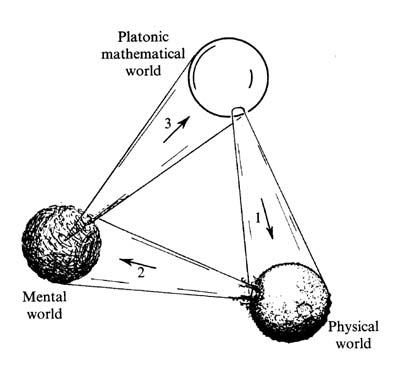
Similarly, in a waking dream, the greater world is somehow represented in the mind. Part of the wonder here is the wonder of consciousness itself, which William James expressed so clearly when he asked, ‘How can the [world] I am in be simultaneously out there and, as it were, inside my head, my experience?’ Many people think there is still no good answer to this question that I know of — although I recently heard the mathematical physicist Roger Penrose identify a striking corollary of it. It is as if, he said, there are three distinct worlds, equally real, and yet each somehow encompassing the others. There is, first, the world of mathematics — unbounded and infinite, and something that Penrose, following Plato, believes really exists. Then, within the world of mathematics there is the relatively small set of equations that, Penrose says, can explain all of physical reality. And finally, within and made possible by that physical reality there is the world of conscious beings and what they can experience. And yet somehow these conscious beings (or at least the ones who are good enough mathematicians) are capable of comprehending the mathematical world. Each world is therefore somehow nested in turn within another in an eternal loop, like the triangle devised by Penrose that has been called ‘impossibility in its purest form.’
— Caspar Henderson, A New Map of Wonders, 2017
